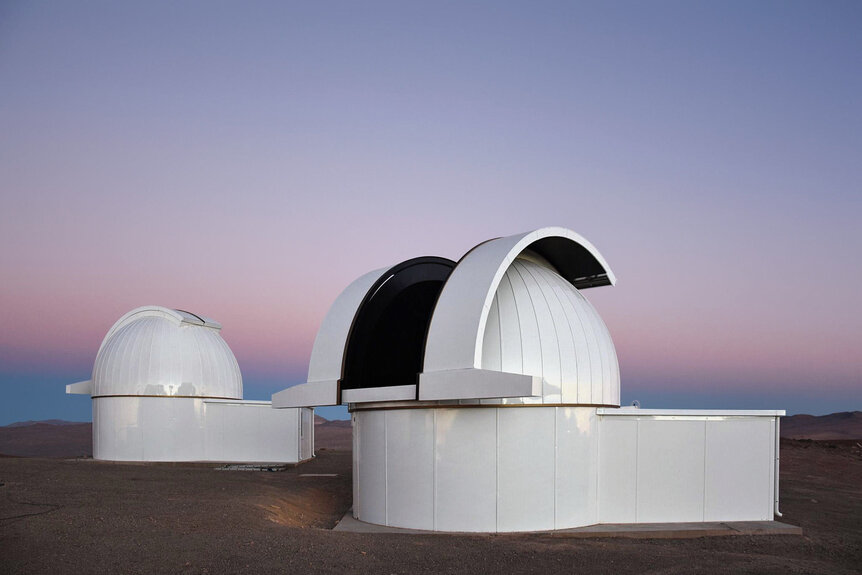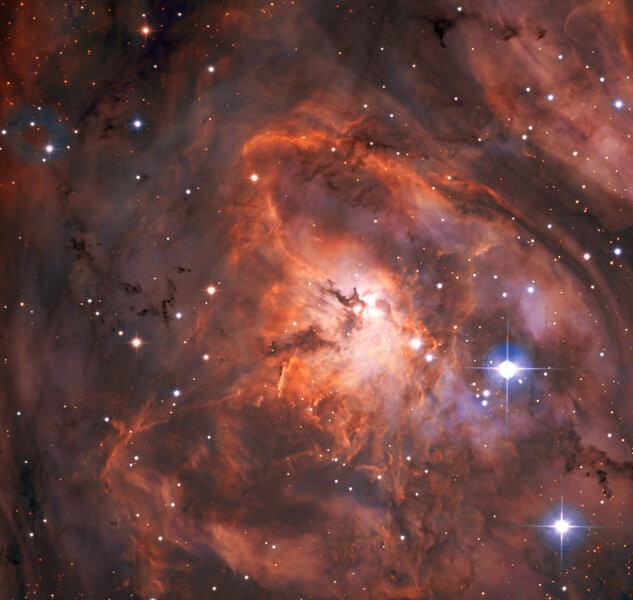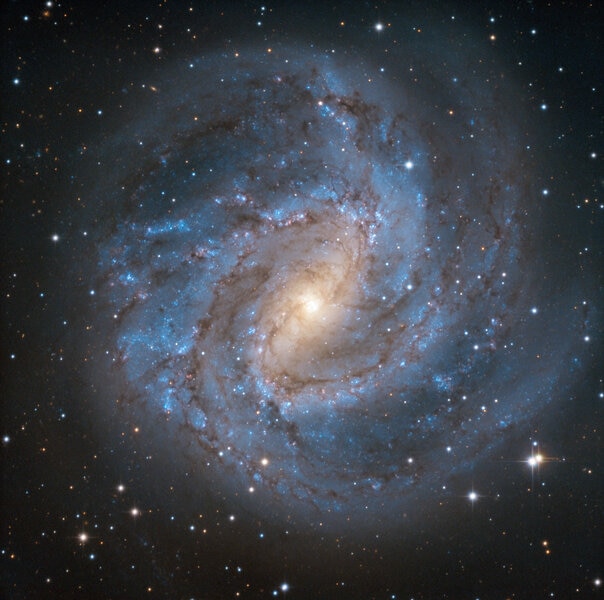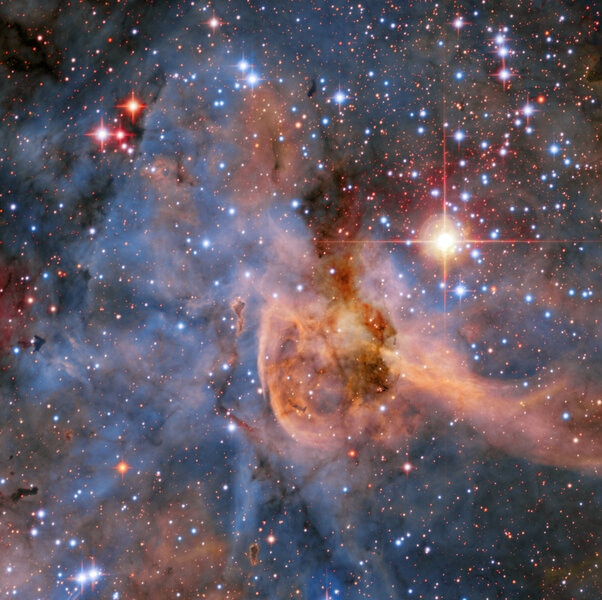Create a free profile to get unlimited access to exclusive videos, sweepstakes, and more!
SPECULOOS (yes, seriously), a new exoplanet hunter, comes online
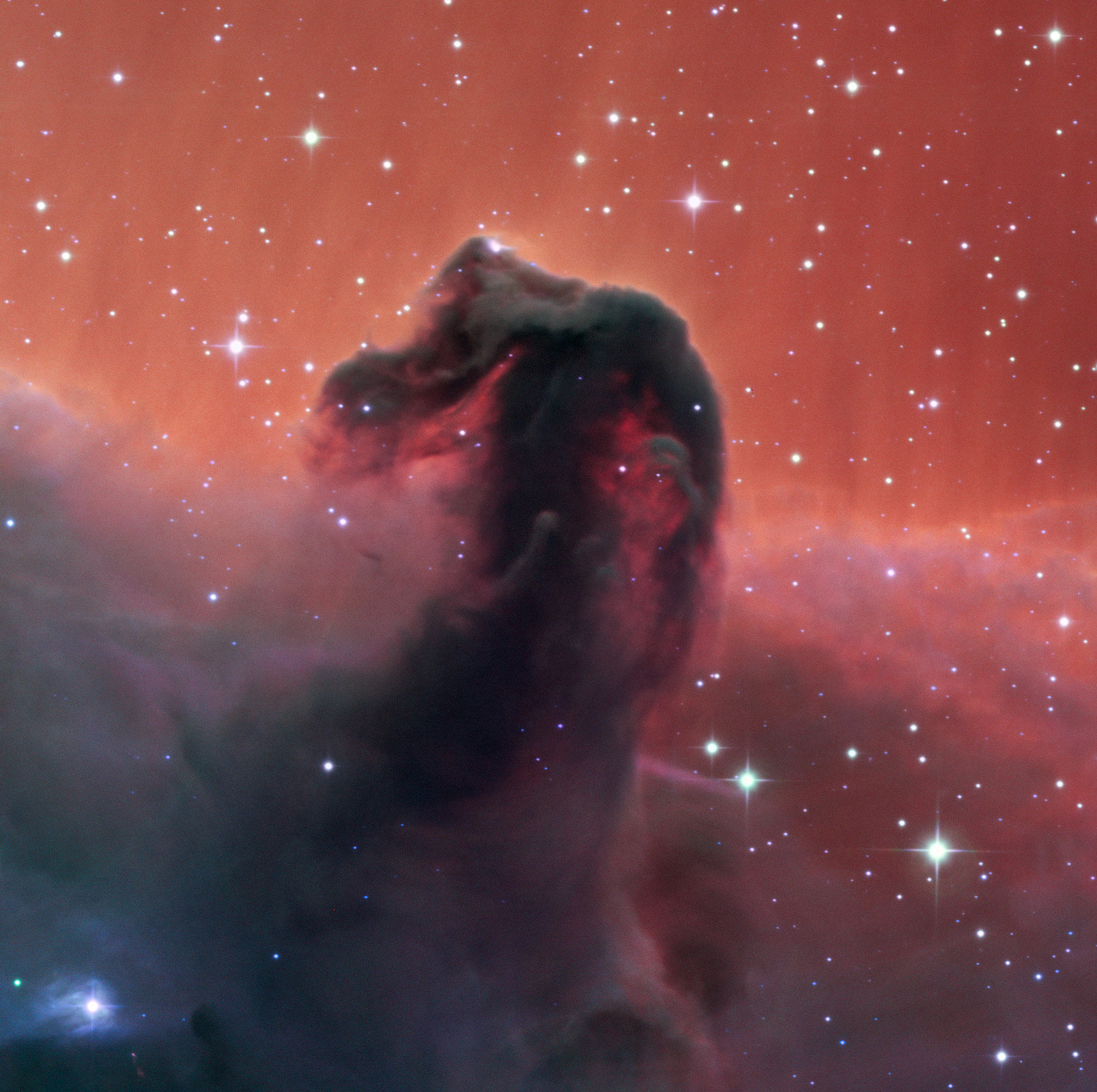
A new observatory has come online to look for planets around nearby stars. I’m pretty excited about the science that will come from it, because it has a very narrow target specification: It’s looking at very cool, low-mass stars to see if Earth-sized planets orbit them!
We think that these low-mass stars may preferentially make planets around the same size as Earth, so they may be a rich hunting ground for such objects. It’s also possible multiple Earth-sized planet systems are likely; the famous case of TRAPPIST-1, with its seven terrestrial planets (at least), may be a rule and not an exception.
The problem with finding such things is that these red dwarf stars tend to be faint — the closest one to us, Proxima Centauri, is also the closest star to the Sun, but is so faint you need a telescope to see it at all! — and the planets close in (and thus have short orbital periods), so you need decent-sized ‘scopes looking at them all the time.
And that’s why this new observatory dedicated to this mission has piqued my interest. It’s called SPECULOOS, for the Search for habitable Planets EClipsing ULtra-cOOl Stars.
Now, I don’t want to derail my own excitement, but that name … oof. I’ve never been a fan of using letters in the middles of words for acronyms. It feels like cheating. I suspect they wanted to name it after a cookie traditionally eaten in Belgium on St. Nicholas Day … and Belgium is a partner in the observatory. Hmmm. I would never, of course, accuse astronomers of this.
OK, anyway, the observatory is cool. Located at the European Southern Observatory’s (ESO) Paranal site in Chile, it consists of four 1-meter telescopes and has camera sensitive to infrared light, which is where these cool stars are brightest. And at least they named the four individual telescopes well: They’re Io, Europa, Ganymede, and Callisto, after the four largest moons of Jupiter (also called the Galilean moons, since Galileo is credited for discovering them).
At an elevation of 2,500 meters they’re above a lot of air, and the dry clime of the desert makes it a great spot to observe. They’ll look at the nearest 100 or so faint red and brown dwarfs to look for Earth-sized transiting planets. It’s expected to find at least a dozen systems like TRAPPIST-1.
The telescopes are operating now, and I expect we’ll get exoplanet science results from them in the coming months; it takes a while to collect the data and analyze it properly. But in the meantime, while the telescopes are designed to look at red stars, that doesn’t mean they can’t see anything else. They’re telescopes, after all. To celebrate the observatory’s grand opening, ESO released a handful of what astronomers call first light images, the first observations from the telescopes. They’re gorgeous, so I want to show them to you, with a brief description.
First up: The Lagoon Nebula:
Nice. The Lagoon is a big star-forming gas cloud in Sagittarius, and is really easy to spot even in binoculars despite its distance of something like 5,000 light years. This shows just the central region, where gas and dust is shaped by shock waves emanating from the winds and radiation of newborn massive stars inside. A lot of stars are being birthed here; just outside this image to the right is a thick lane of dust and an entire cluster of stars called NGC 6530, just getting their start in life.
Next: The Horsehead Nebula:
Can you guess where it got its name? The Horsehead is a thick splotch of dark dust seen in silhouette against thinner but brighter hydrogen gas that’s excited by light from the nearby massive star Sigma Orionis (which is also what’s shaping the Horsehead into its eponym). It’s actually a bit tough to observe visually, but doesn’t present too much of an issue to a 1-meter ‘scope with good filters. Incidentally, stars are forming inside it, too. Near the base of its “neck” is a long finger-like trail of dust; there may be a star being born at the tip, where the dust is thickest, and the rest of the dust is blown back by Sigma Ori like a sandbar in a current.
Let’s leave the galaxy for a moment, shall we?
That’s M83, a galaxy about 15 million light years away. It’s a textbook example of a face-on spiral, with loads of star-forming gas clouds lining the arms, contrasted by long dust lanes. It’s a little bit asymmetric, and that may be due to a recent encounter with a smaller galaxy that passed close by and interacted with it gravitationally. It’s a bright, easy-to-observe galaxy in principle, but not too many northern observers can see it because it doesn’t get very far above the southern horizon for us.
Returning to the Milky Way, let’s zoom in on one of the largest star-forming clouds we know of: the Carina Nebula:
Yikes. This is centered on the Keyhole Nebula, that splotch of gas and dust in the middle. Just to the upper right is the terrifyingly luminous star Eta Carina, so massive and bright that were it emitting any more energy it would tear itself apart. It has undergone epic paroxysms in the past and will one day explode as a supernova. It’s one of many, many stars that formed in this nebula. In fact, the entire Carina Nebula is so big it stretches way beyond what you see here; it would take dozens of images like this to cover it.
This also has one of my very favoritest objects in the sky in it, just left of the Keyhole. It’s a dense clot of dust with stars forming in it, shaped into a sandbar-like feature similar to what’s happening in the Horsehead. If this one looks like anything, it looks like the cosmos is flipping us off. I get it, Universe. I do.
So there you go. Magnificent images, and if these are indicative of the kinds of observations SPECULOOS will give us — and they are — I’m excited to hear about the planetary bonanza it will find … weird name or not.
